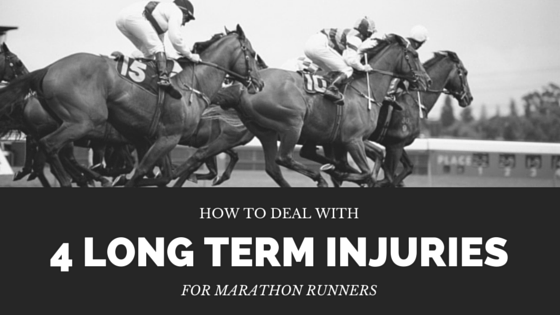4 long term injuries for marathoners
Hopefully it will never escalate to this stage in your running career. If it does you will already have consulted a doctor and get treatment. In addition it is ver unlikely that you will go on with your every day tasks with these symptoms, so there is no risk of over training. Still here is some guidance around the most severe injuries for marathoners.
Anterior Cruciate ligament injury
ACL usually occurs when the knee twists while the foot remains stationery on the ground. Typical in sports where directions are changed frequently and the torso gets twisted like squash, tennis or golf, this can also happen to runners if they strike on something or get stuck for some reason. In most cases the injured describe a pop or tearing sensation around the knee when the injury is inflicted.
Recovery takes from 6 - 9 months. Whether you decide for surgery or not extensive rehab will be required with graded strengthening work to target weak muscles like the quads, hamstrings, calf and gluteal muscles.
Stress fracture
Stress fractures are a result of over usage. Full recovery takes up to 6 months. The recovery training for this injury varies depending of the nature of the fracture. Good recovery actions is to brush up on your technique and correct the training errors which have been done to cause the stress fracture in the first place.
Achilles Tendon Rupture
The Achilles tendon rupture can be treated with or without surgery just as the Anterior Cruciate ligament injury. Here again early treatment is key to qucdik recovery. This little beast immobilises for the first 6 - 12 weeks and is followed by a rehab period of 6 - 9 months. Not really fun (as all these injuries). If your leg is in a boot go and hit the gym and work on your upper body. Once you are "freed" again focus on slowly rebuilding the muscles in the area which you could not use.
Osteoarthritis of the knee
OA is another wear and tear injury that especially follows after one of the knee injuries mentioned in this post series. It is a condition which ´has to be managed rather than healed. Active recovery is at its best when it comes to OA. You will have to experiment what works and what does not with to avoid swelling and pain to strike the right rest / exercise balance. As with most other injuries changing to less impact sports like cycling and swimming may help to still keep training volumes high while taking care of your knee.


